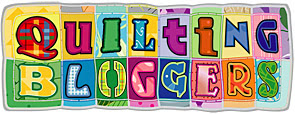
Dictionary.com defines bias as:
bi⋅as [bahy-uhs]
–noun
1. an oblique or diagonal line of direction, esp. across a woven fabric.
2. a particular tendency or inclination, esp. one that prevents unprejudiced consideration of a question; prejudice.
3. Statistics. a systematic as opposed to a random distortion of a statistic as a result of sampling procedure.
4. Lawn Bowling.
a. a slight bulge or greater weight on one side of the ball or bowl.
b. the curved course made by such a ball when rolled.
5. Electronics. the application of a steady voltage or current to an active device, as a diode or transistor, to produce a desired mode of operation.
6. a high-frequency alternating current applied to the recording head of a tape recorder during recording in order to reduce distortion.
–adjective
7. cut, set, folded, etc., diagonally: This material requires a bias cut.
–adverb
8. in a diagonal manner; obliquely; slantingly: to cut material bias.
–verb (used with object)
9. to cause partiality or favoritism in (a person); influence, esp. unfairly: a tearful plea designed to bias the jury.
10. Electronics. to apply a steady voltage or current to (the input of an active device).—Idiom
11. on the bias,
a. in the diagonal direction of the cloth.
b. out of line; slanting.
Origin: 1520–30; < MF biais oblique < OPr, prob. < VL *(e)bigassius < Gk epikársios oblique, equiv. to epi- epi- + -karsios oblique
Your Guide to Quilting says defines bias as:
Any diagonal line between the crosswise or lengthwise grain line in woven fabric. The bias grain has more stretch and is less stable than the crosswise or leghtwise grain.
Intersects the lengthwise grain and crosswise grain at a 45 degree angle.
Jargon:
So we know it's a diagonal direction on the fabric, why do we care?
Well, if we pay attention to the grain lines when cutting the pieces to a project, it minimizes stretching and strengthens the overall piece.
So, how do I find the bias on a piece of fabric?
By using the diagram below.
 (Diagram based on diagram on page 85 of Your Guide to Quilting .
(Diagram based on diagram on page 85 of Your Guide to Quilting .









No comments:
Post a Comment